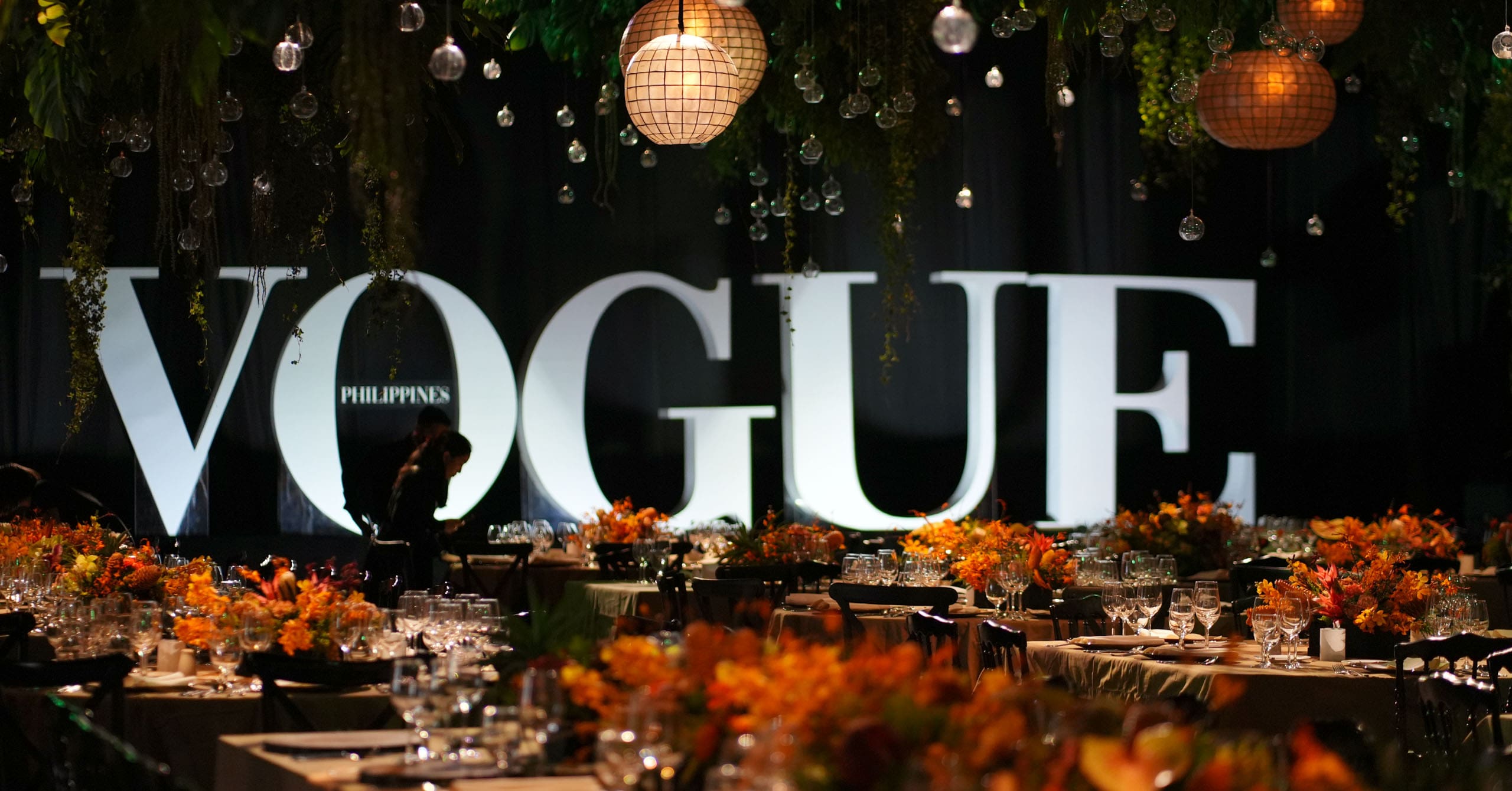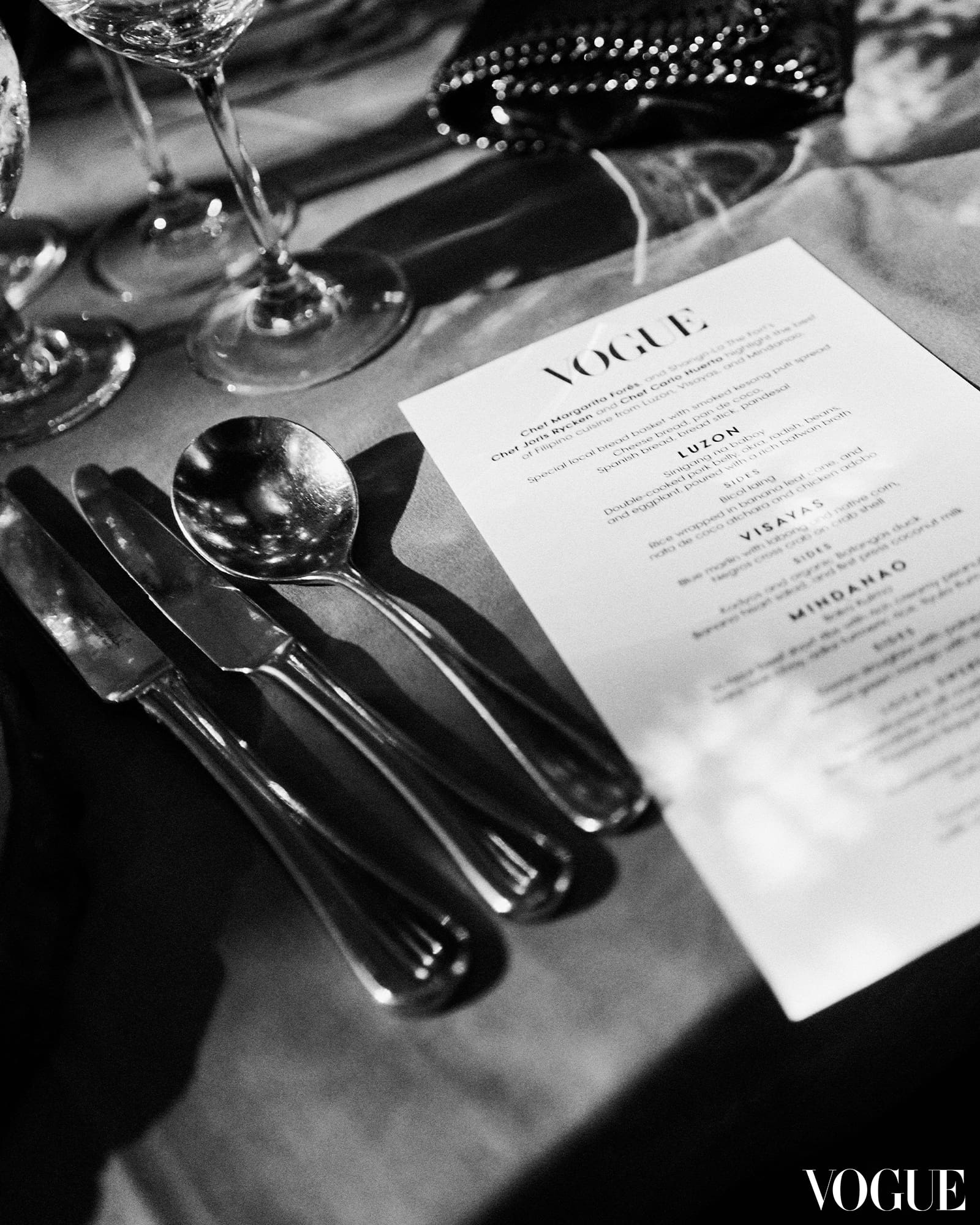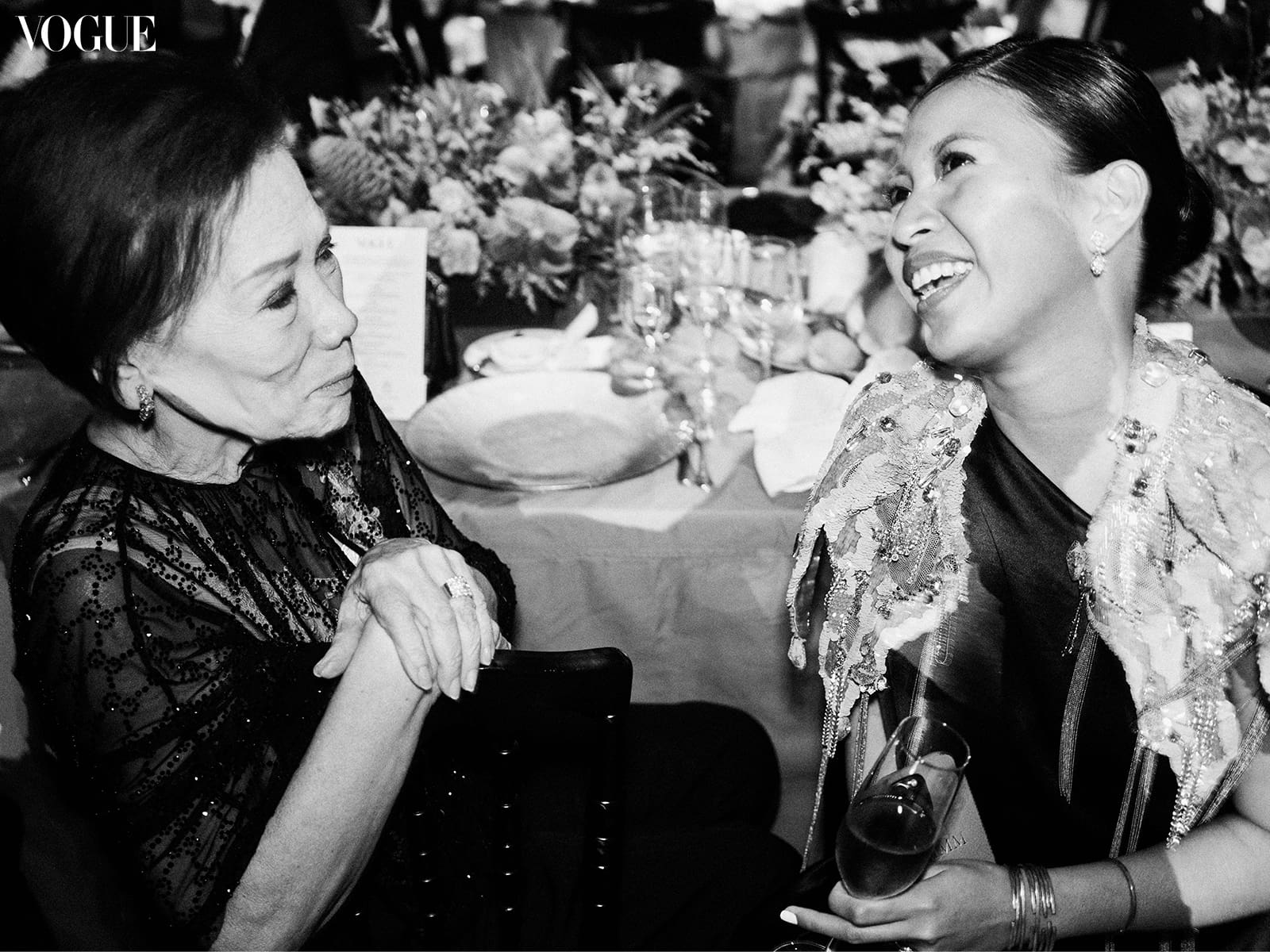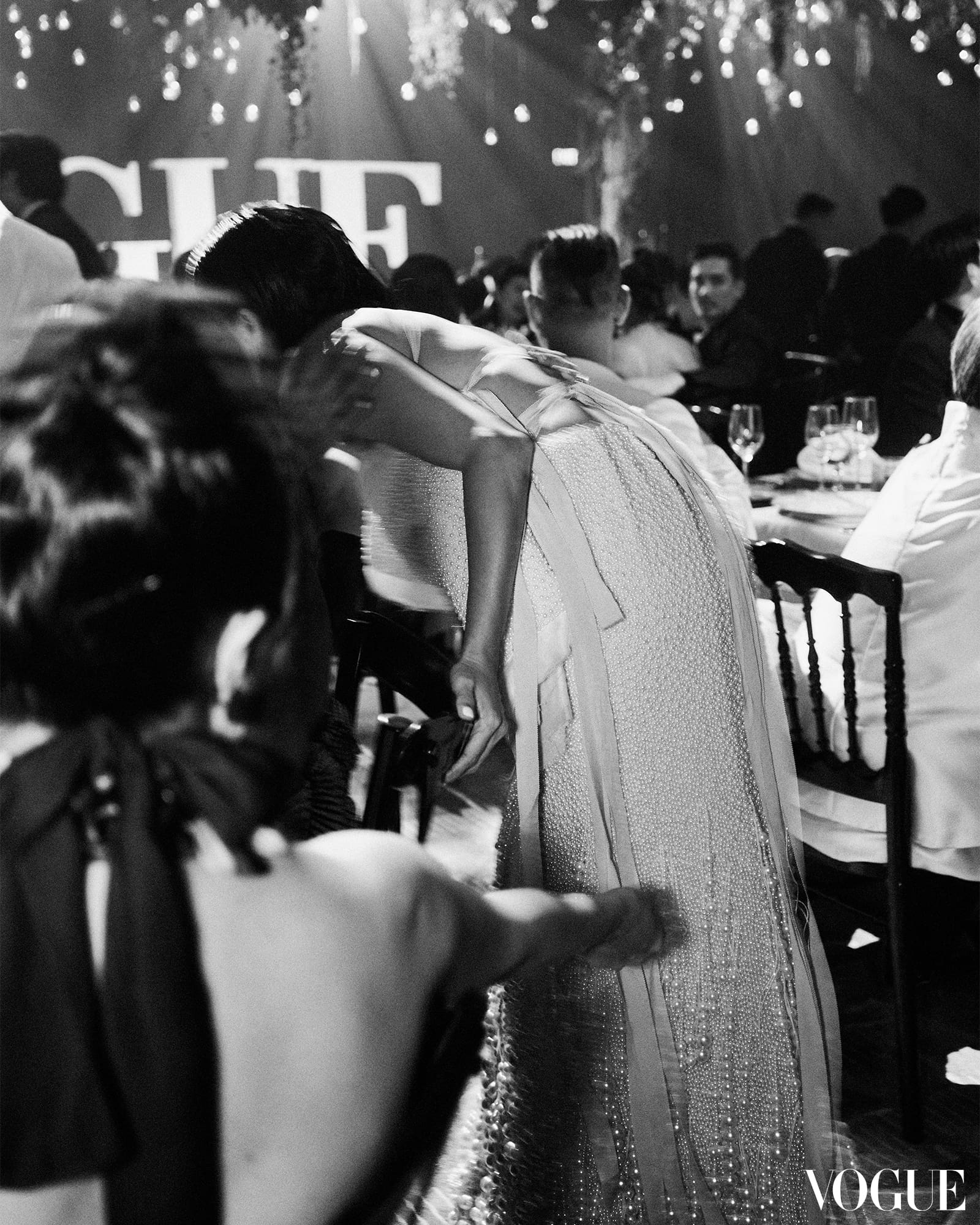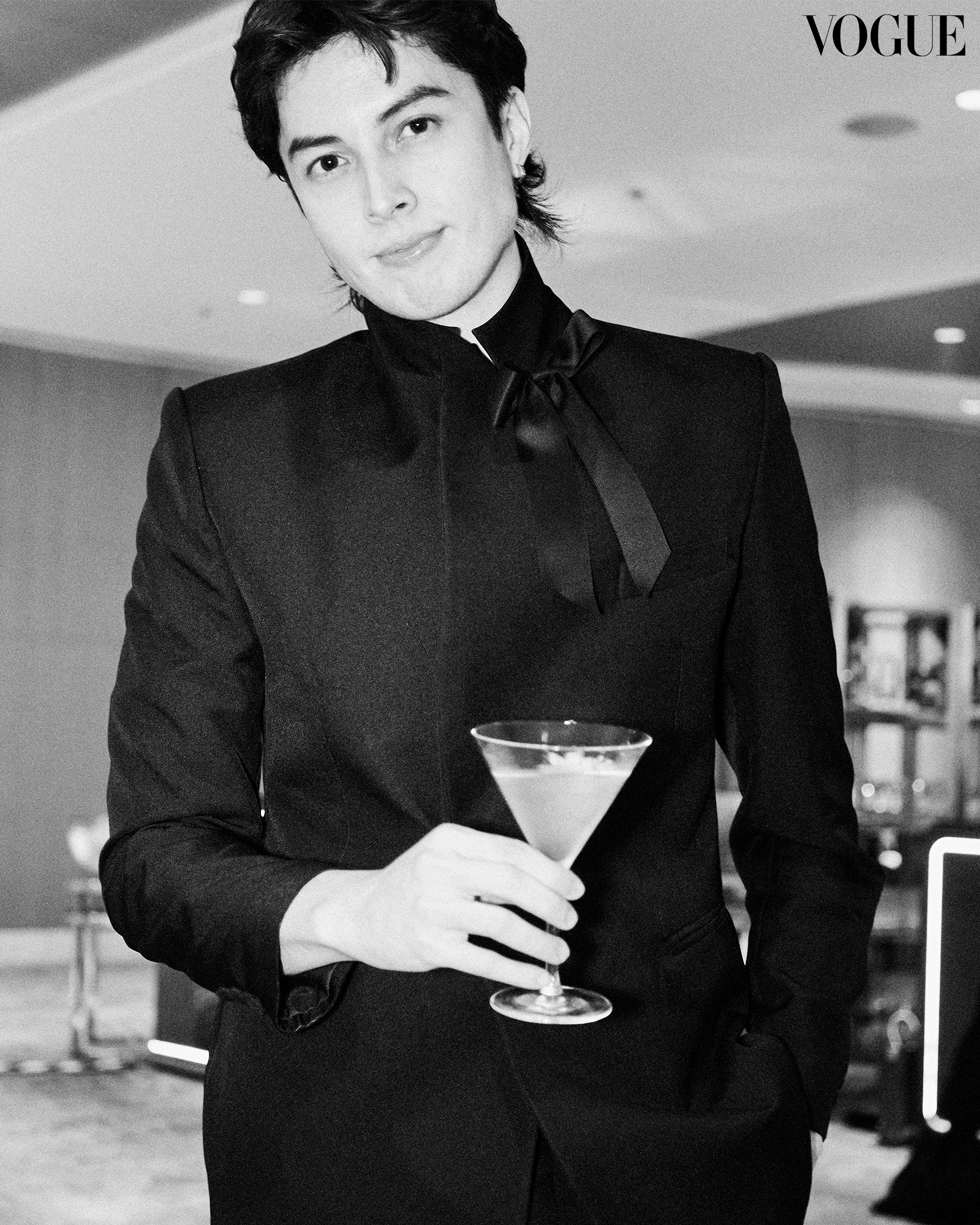Photo by Pau Guevarra
Photo by Pau Guevarra
A year ago this month, the local edition of Vogue launched its pages as a love letter to the Philippines. This first issue was a journey across the country’s three island clusters. It celebrated how, despite leaps and bounds between islands, we are cut from the same cloth. In the issue, editor-in-chief Bea Valdes wrote, “Our hope was guided by the Filipino values of Malasakit (deep empathy), Bayanihan (sense of community), and optimism that defines so much of our culture.” One of the objectives of the title has been to challenge the norm, and dig deeper into the unexplored, as seen when the images of Apo Whang-Od and Dr. Dolores Ramirez graced the cover of their magazines.
At last Tuesday night’s anniversary gala, this penchant for approaching things in an unconventional manner extended to a sit-down dinner, conceptualized and created in tandem with Belo Beauty. As the most fashionable of individuals found their seats in the grand ballroom–including of course Dr. Vicki Belo, Dr. Hayden Kho, and Cristalle Belo–they were given a menu that was divided into Luzon, Visayas, and Mindanao, a callback to Vogue Philippines’ maiden issue. Courses were inspired by these three island groups, and everyday dishes would be highlighted as the meal progressed.
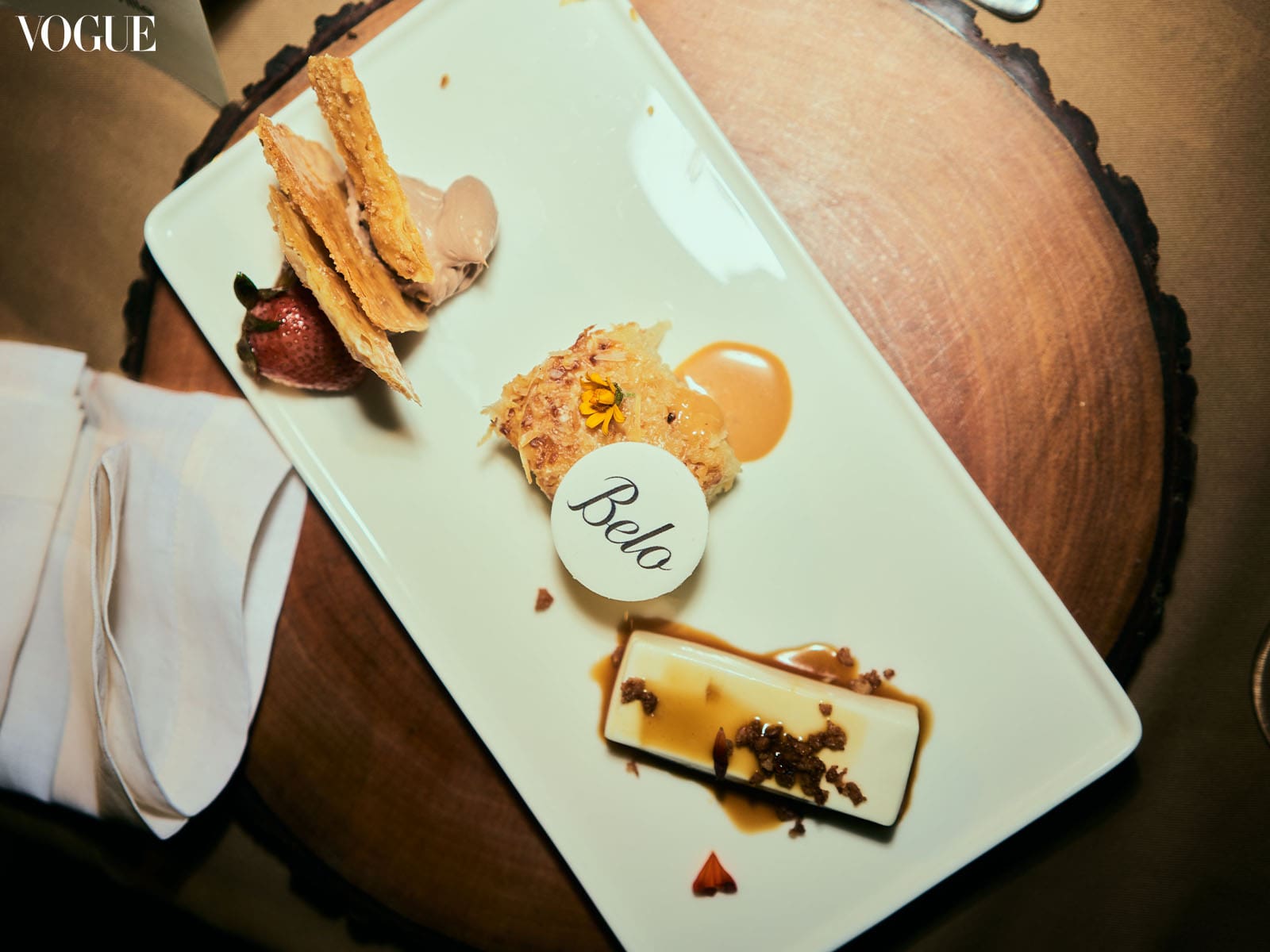
This six-hands dinner was a collaboration between chef Margarita Fores, and Shangri-La BGC’s chefs Carlo Huerta and Joris Ryken.
Ryken is from the Netherlands but his work as a chef has brought him all over the world, before planting his roots in the Philippines; first at Shangri-La Mactan, and then in Shangri-La The Fort. “My wife is from Ilo-ilo, so I’m quite familiar with Filipino flavors.” When asked what his local favorites are, he responds as a proud husband would: “my wife’s sinigang [Filipino sour soup].”
Huerta, who worked with Margarita for the menu during the inaugural gala, hails from Cusco, Peru, but has lived in Manila for seven years. “You know Peruvian and Filipino have the same grandmother,” he mentions, referring to our shared roots as well as the type of home cooking we have. “You have kilawin, we have ceviche. You have the term adobo and so do we. You have bulalo [a soup made with marrow bones, beef shanks, and produce], and we have sancochado,” he explains with passion.

Fores, on the other hand, has been championing regional Filipino cuisine for years, both locally and internationally. “I think the conviviality of how this meal was approached really celebrates what being Filipino is about. It also ties in with what Vogue Philippines represents, which is showcasing the best of our country.”
The introduction to the dinner began outside of Shangri-la BGC’s Bonifacio Hall. Cocktails started off with small bites from the chefs: kesong puti (white cheese made from carabao’s milk) and basil in lumpia wrappers, skewers of chicken inasal (a marinade that uses annatto oil) dipped in a sour broth made with lemongrass, kinilaw na lapu-lapu (grouper) in soup spoons, and sisig encased in puff pastry and then topped with a custard-yolked quail egg. Drinks came in the form of classic gin and whiskey cocktails.

“The dinner room was meant to feel like an outdoor veranda, under the shade of trees,” says Vogue Philippines editor-in-chief, Bea Valdes. “It was not meant to be strictly formal, but convivial and special. The table settings were from chef Margarita Fores’s team and Shangri-La The Fort. The arrangements, which were done by Nikki Chato, had vandas, ornamental pineapple, cymbidiums, anthurium and banana blossoms; a variety of tropical flowers.”

As the dinner officially began, chef Huerta stepped onstage to introduce the first course from Luzon: sinigang na baboy. “The pork went through a long process of cooking for 24 hours to make it super tender. After cooking it was fried. So it’s crispy outside and tender inside. Lots of textures,” he shares. Slices of this almost translucent pork belly rested on top of a grilled eggplant purée, then framed by familiar vegetables; a carefully knotted green bean, slivers of okra, and cherry tomatoes. Piping hot broth was poured over it from white porcelain pots. The dish was a clean balance between savory and sour, with the distinct flavor of batwan (a sour fruit native to Iloilo in the Visayas) as its souring agent shining through.
One of the things the trio of chefs decided on while planning the menu was to provide a medley of side dishes and sawsawan (dipping sauces), as every Filipino household is wont to have. For Luzon, the sides came in the form of rice wrapped in a banana leaf— because what is sinigang without rice—Bicol laing (taro leaves cooked in coconut milk), and chicken adobo with nata de coco atchara (coconut jelly with pickled unripe papaya).
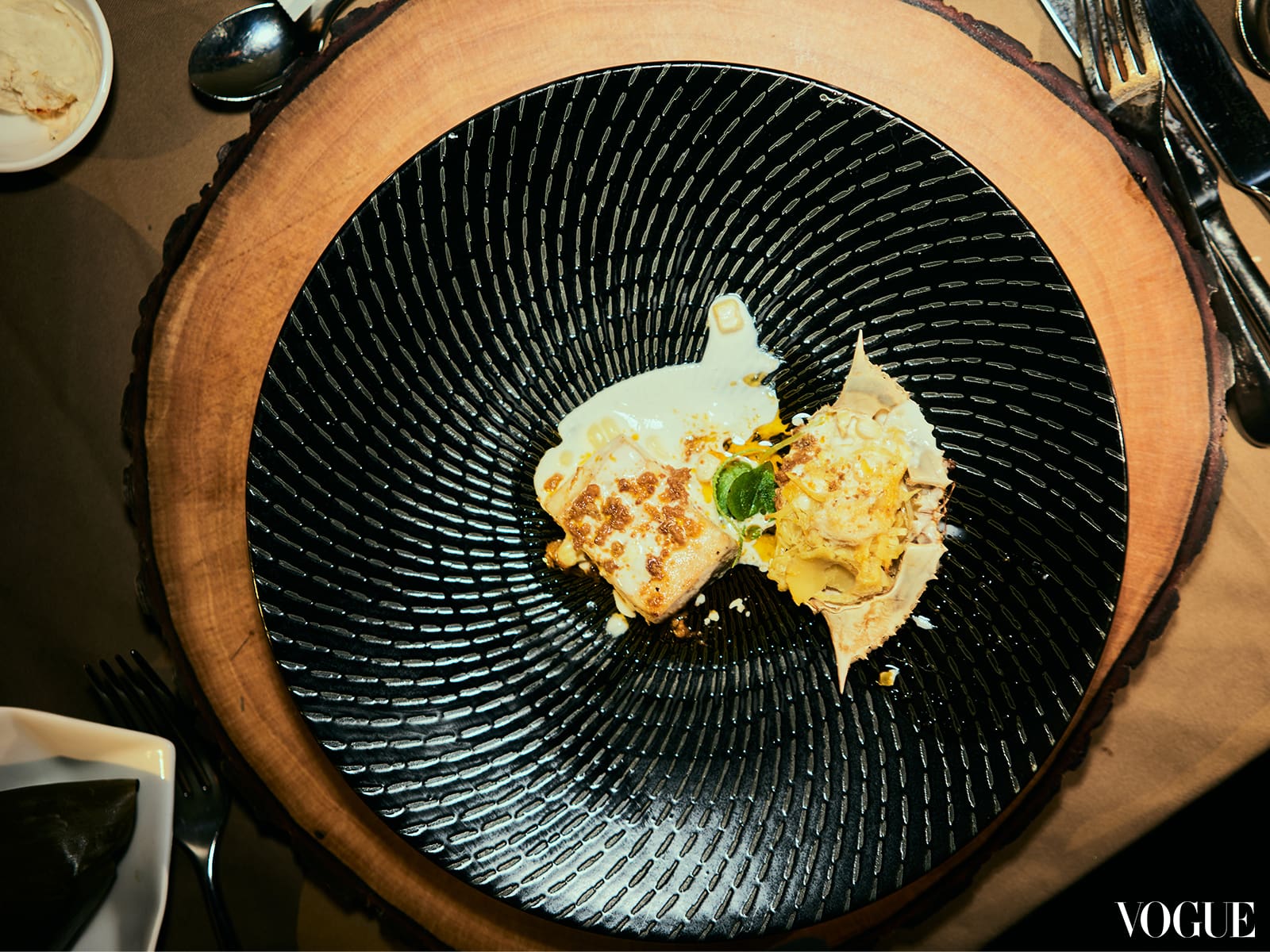
Following that, the dinner made its way to the Visayas, where Fores’s hometown is located. She confesses that comfort food and home cooking were the roots of her dish. “We’re doing something that’s like a hometown dish that we do in Negros,” she says, referring to a combination of labong (young bamboo shoots), crab, corn, and coconut milk. The plate featured a cross crab shell stuffed with a filling of crab meat, creamed corn, and taba ng talangka, as well as Philippine marlin, whose flesh is almost steak-like when cooked. To pair with it, a banana heart salad, which is a heritage recipe by Fores’s grandmother that uses first-press coconut milk, and a side of KBL (kadyos, baboy, langka), with pork swapped out for local organic duck instead.
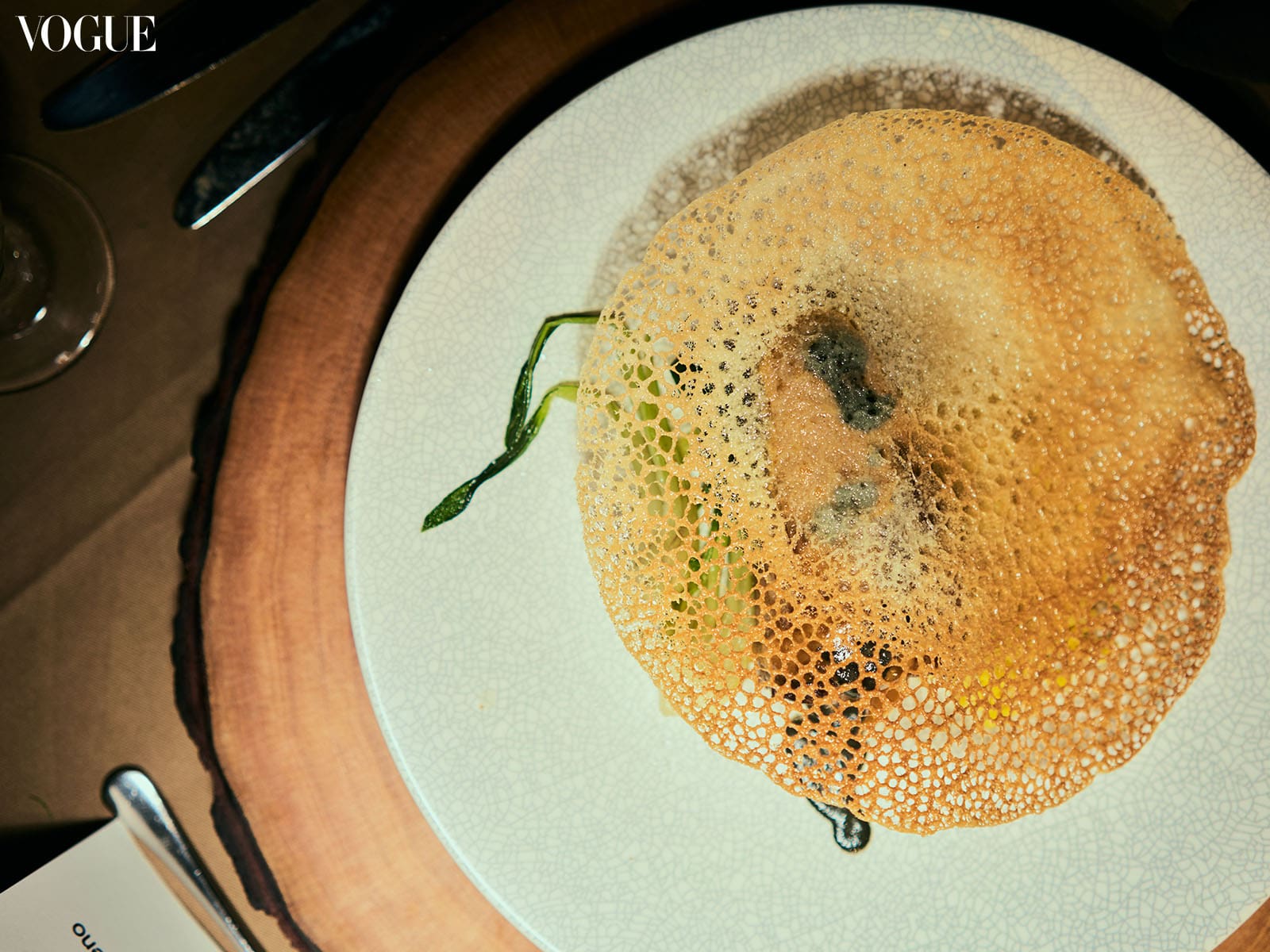
Chef Ryken kicked off the Mindanao dish with an introduction to kulma, a curry dish with heavy influences from the neighboring countries, Indonesia and Malaysia. A tuile made from rice flour hid the main course like a veil. Under it, a serving of baka kulma, a 36-hour slow-cooked beef curry with peanut sauce, topped with a tiyula itum reduction. The starch it came with was adlai cooked in turmeric. The side dishes that accompanied the kulma were sinuglaw—a combination of grilled pork and kinilaw—and pickled green mangoes with sakurab, a local tubular allium related to the scallion, which grows around the Lanao provinces of Mindanao.
A collection of sweets capped off the multi-course road trip from Luzon to Mindanao. A mousse of dark chocolate and barako (a local variety grown coffee) came with pili-crusted hojaldres wafers and poached Baguio strawberries; a cassava cake with 24-month-old Parmigiano came with dulce de leche; and a coconut milk panna cotta was dusted with latik (fried coconut curds) crumble, then drizzled with a panocha (sugar cane juice crystalized in a coconut shells) glaze.
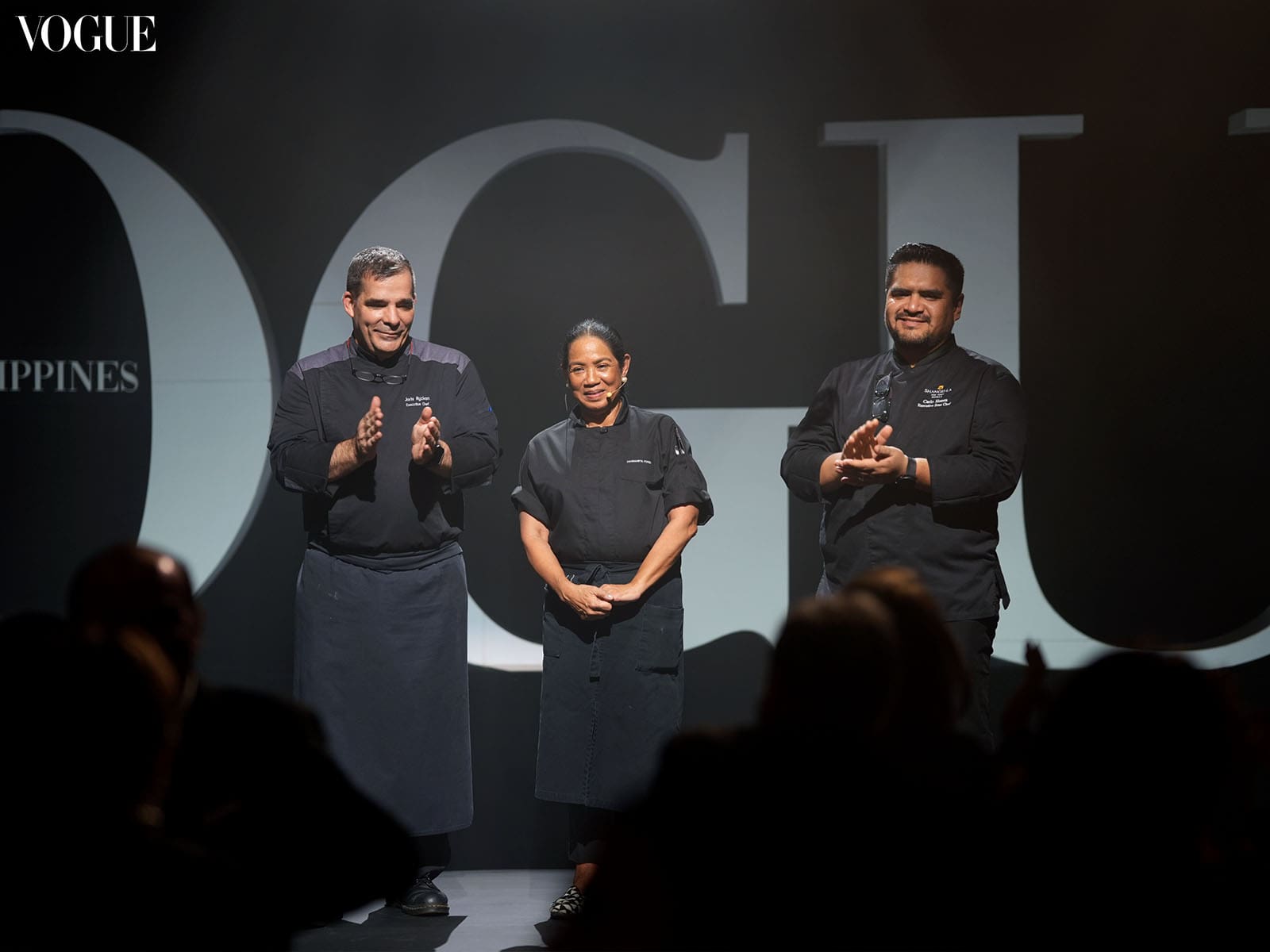
The menu created by chefs Margarita Fores, Carlo Huerta, and Joris Ryken mimicked Vogue’s journeys around the Philippines in the last 365 days, as well as echoed the evening’s theme of craft, creativity, and innovation. Food, similar to fashion, isn’t simply an exploration of what was and what is but what can be. And, if you look closely enough throughout the entire meal, you can find the common threads—similar ingredients and flavor profiles hidden in an immensely diverse food nation—that remind us that despite our differences, whether it be Luzon, Visayas, or Mindanao, we are still woven together at various points.
